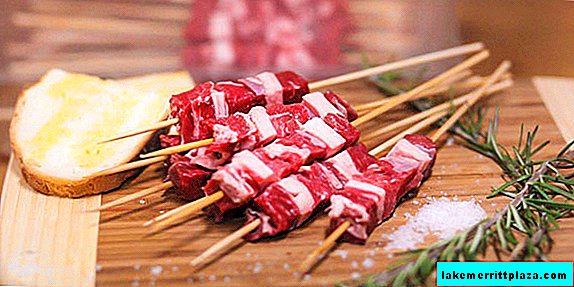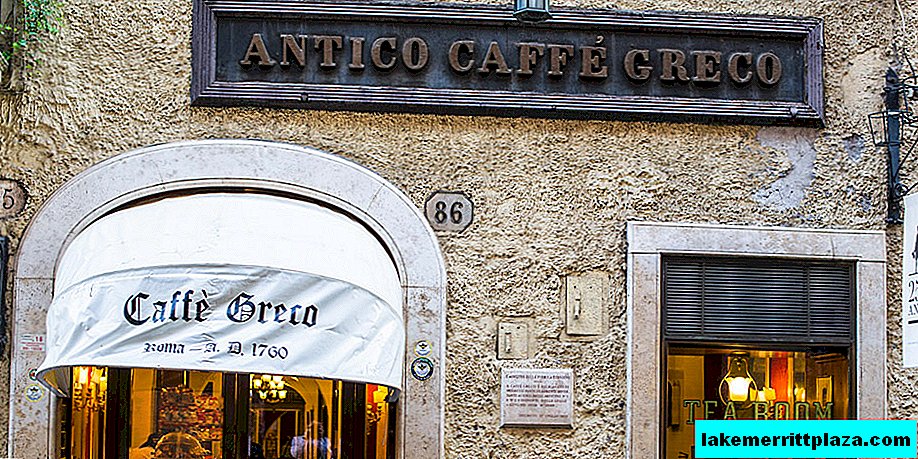What food do you associate with summer vacations? Surely, many, without hesitation, replied: "Barbecue!" Do you know that Italy can also boast of its performance of barbecue? Arrosticini (Arrosticini) is a lamb dish typical of the Apennines, particularly in the Abruzzo region. It is impossible to visit Abruzzo and not try the traditional arrostichini!
Appearance story
Today, the Arrosticini are one of the most famous and important symbols of the cuisine of Abruzzo. They can be found practically throughout the region: from mountains to the coast. But where exactly did the Italian kebabs first appear?
There are several historical versions of the origin of the Arrostichini that attribute the authorship of this popular dish to two provinces: Pescara and Teramo.
According to the historian Francesco Avolio, the area between the birth of kebabs should be considered the territory between the municipalities of the Voltigno plateau, namely Farindola, Villa Celiera, Civitella Casanova, Civitana Catignano and even Pianella. These communes are currently part of the province of Pescara, but for a long time they belonged to Teramo.
Therefore, until now, the grill used to make arrostichini is called "canala" because of its resemblance to a gutter.

But in different territories you can find such terms for brazier as fornacella, furnacella, rustillire. So the arrostichini in the local dialect is also called rustell 'or arrustell, as well as spiedini or spidducci.
Dish description
Original arrostichini are always made from lamb (both from lamb meat and from older castrated animals). On a wooden skewer, pieces of meat alternate with pieces of fat.

There are 2 main types of dishes:
- industrial (produzione in serie) - smooth meat cubes with a side of 1 cm, strung on wooden skewers no more than 20 cm long;
- hand-made (produzione manuale) - meat is cut with a knife into pieces of different sizes, alternating them on a skewer with lamb fat, which makes the kebab soft and aromatic.
The last type of arrostichini is preferred among gourmets. It is believed that it requires very fresh and high-quality lamb in connection with a longer cooking process.
Today, arrostichini, in addition to the classic, are offered in different taste options.
For example: spicy or with the addition of natural flavors such as truffle oil.
In the past few years, cooks have shown increasing loyalty to non-traditional types of dishes. Therefore, on sale you can find arrosticini from turkey, chicken and pork.
Liver kebabs are also gaining popularity. In the dialect of the Abruzzo region they are called "fecte". In them, slices of the liver alternate with onions and bay leaves to reduce the specific smell of offal.
Traditionally, arrostichini is accompanied by slices of homemade bread soaked in olive oil with plenty of hot pepper. The most suitable wine is Montepulciano d'Abruzzo (Montepulciano d'Abruzzo). They eat meat directly from the skewer, removing it with their teeth.
Italian Ministry of Agriculture and Food Arrosticini is included in the list of Food products of traditional Italian cuisine (P.A.T.).
How to cook? Classic recipe
The classic Arrostichini recipe seems simple enough. But you should know some nuances to bring the dish to the ideal.
Cooking begins with the processing of lamb. With a sharp knife, remove the greasy areas, and cut the meat into cubes with a side of about 1-2 cm. Tentatively: a piece should recede from the skewer about 1 cm to the side.
The resulting cubes are strung on skewers along with pieces of fat (about 25% of the total mass of barbecue). The latter makes the dish more fragrant, soft and juicy.

We cook arrostichini on the grill, in the oven or in a grill pan until a crisp appears. Do not overcook to avoid drying. Remove and salt to taste. For flavoring, hot meat can be laid on sprigs of rosemary.
Arrosticini is a dish that is best consumed immediately. If necessary, store in the refrigerator in a tightly closed container for no more than 2 days. Freezing is not recommended.
Alternative Chicken Recipe
Of course, for a true Italian, the arrosticini is always associated only with lamb. Not all Russian people have the same love for this aromatic type of meat. Recently, poultry barbecue has gained great popularity. We are in a hurry to share with you two interesting recipes for chicken arrostichini.
With zucchini
For the preparation of chicken chicken with zucchini, we need:
- Chicken Breast - 400 g
- Zucchini - 2 pcs. (medium size)
- Breadcrumbs - 50 g
- Hard cheese - 40 g
- Egg - 1 pc.
- Salt and pepper to taste.
So, grind the chicken breast into minced meat using a meat grinder. Three zucchini on a large, and cheese - on a fine grater. Mix all the ingredients in a bowl until smooth.
Next, with wet hands, we form a barbecue around a wooden skewer. Bake in the oven, heated to 200 degrees, for 15 minutes. Serve hot.
With ham
Chicken and ham arrosticini are perfect for a home dinner or a festive table.
Necessary components:
- Chicken Breast - 300 g
- Ham - 150 g
- Hard cheese - 50 g
- Breadcrumbs - 40 g
- Olive and butter, thyme - a small amount
- Sage - 1-2 leaves
- To start, we rub the cheese on a fine grater. Mix half with breadcrumbs, a pinch of thyme and a little olive oil.
- Chicken breast is cut into long, wide slices and beat off. Then grease each piece of the resulting breading mixture on both sides. Spread on chop ham and some cheese and twist into a tight roll.
- We place all the formed rolls on the board close to each other and pierce 3-4 skewers through them parallelly. We cut the meat, holding a knife along the skewers. Thus, on each stick we get several strung chicken "rolls".
- In a pan with non-stick coating, heat the butter with sage leaves.
- We spread the chicken arrostichini and fry on medium heat for 3-4 minutes on each side. Enjoy your meal.
Where to try
The most famous place in Italy for tasting Arrosticini is located in the Gran Sasso National Park (Gran Sasso d'Italia, "Great Cliff of Italy") and is called Ristoro Mucciante - people come here from all over the country and, of course, from Rome.
Watch the video where Arthur and Leonardo talk in Russian about this unique place:
One skewer of an arrostichini costs 0.80 cents, for an adult to eat enough about 10 pieces. The road from Rome takes about two hours.
There is a version of the video about arrostichini in English:
Beneficial features
In conclusion, I would like to note that the use of arrosticini is not only a celebration for taste buds, but also a benefit for the whole organism. Meat is an excellent source of protein and mineral salts necessary for the efficient functioning of metabolic processes.
Lamb is rich in iron, which has a beneficial effect on blood formation. In addition, the presence of vitamin B12 strengthens the nervous system and contributes to the proper functioning of the liver.
Do not waste time in vain, rejoice more often, take a break from the hustle and bustle and remember: “Arrostichinis do not like only sheep!” Guess why?








